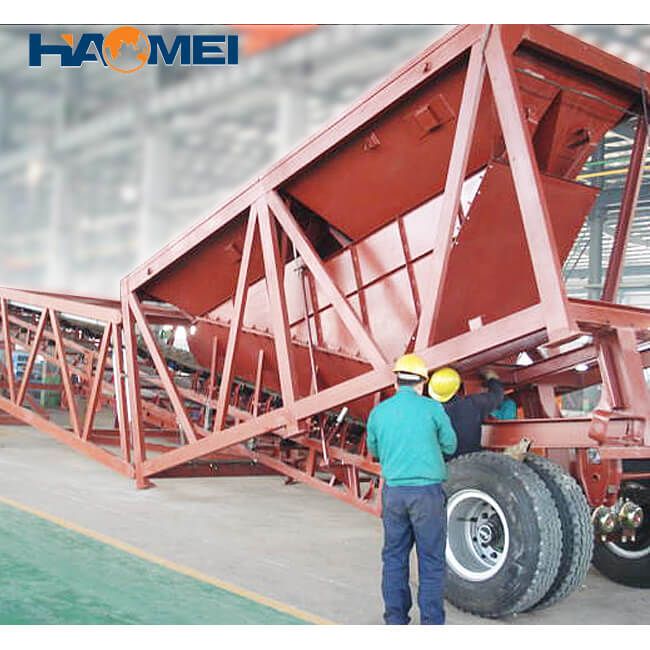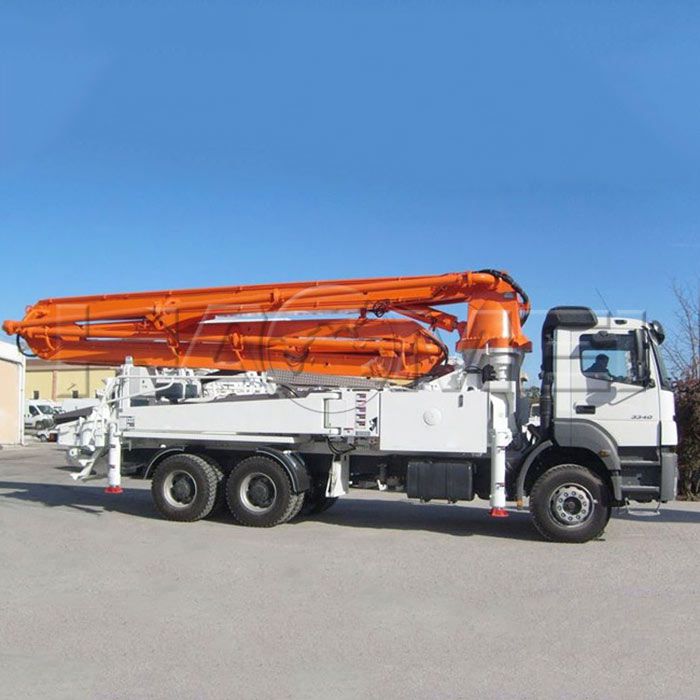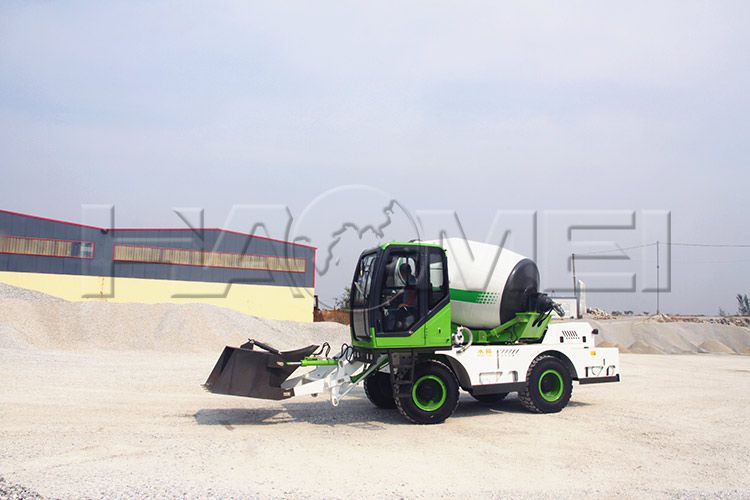The mobile construction equipment like mobile batching plant for sale is a concrete production line that centralizes the material storage, weighing, transportation, mixing, unloading and automatic control systems of the concrete mixing station on a trailer chassis. Its operation process, operation mode and maintenance are the same as those of the stationary concrete batching plant.
Unlike traditional mixing plants, mobile concrete mixing plants adopt a semi-trailer design. The equipment is divided into two unit modules: aggregate batch processing unit and material mixing and conveying unit. In addition to meeting the basic functions of batching and mixing, mobile batching plants also emphasize modular design and fast and convenient installation.

The models of YHZS mobile concrete mixing plants include: YHZS25, YHZS35, YHZS50, YHZS60, YHZS75, YHZS90, YHZS120 and other models to choose from. The YHZS mobile concrete mixing station has a theoretical productivity of 25-120m³/h. It is equipped with a JS twin shaft mixer. It is is mainly used for temporary projects or projects that require frequent changes of construction locations.
The theoretical productivity of the YHZS75 mobile concrete plant, that is 75m3hr mobile concrete batching plan is 75 m3/h and the actual productivity is about 60m³/h. According to 8 hours a day and 300 days a year, the annual concrete output is about 144,000 cubic meters.
FEATURES OF YHZS75 MOBILE CONCRETE MIXING PLANT
1. The complete set of machinery and equipment has a compact structure and integrates the entire process of concrete manufacturing such as feeding, weighing, and mixing on a trailer-mounted chassis.
2. The computer software operation interface is simple and clear at a glance, and the working performance is stable and reliable. The equipment is suitable for working in various harsh environments.
3. The mobile mixing station is equipped with tires, traction tips, driving data signal transmission equipment, and braking systems, making it very convenient to ship. Generally, a tractor can complete the work of changing the site.
4. It occupies a small area and is quick to assemble. It can be assembled and put into production in 2-3 days. It is easy to disassemble and assemble, and can be disassembled and put into operation in one day.
HOW TO CHOOSE CONCRETE BATCHING PLANT
1. Production scale
The scale of production is one of the factors that determine the model of the concrete batching plant mobile. It can be judged based on the annual output, monthly output, daily output and hourly output. You can choose a mixing station model with a theoretical output slightly larger than the your actual need.
2. Construction site
The size of the site and the conditions of the construction site are important factors in selecting the model and type of concrete mixing plant. According to the on-site terrain conditions, resource conditions of the construction site, and the customer's financial situation, you can choose the stationary concrete plant or mobile concrete batching plant.
3. Other ancillary equipment
The size of the concrete mixer should match the loading and unloading capabilities of the concrete mixer truck. Improper matching will affect work efficiency. The loading capacity of the loader should match the batching station production capacity of the concrete mixing station.
4. Management functions
If intensive and automated management is adopted, the management functions and automation functions of the concrete mixing equipment should be considered.
5. Equipment performance
We need to consider the stability, versatility, functionality, etc. of the concrete batching plant mobile. The equipment should have the characteristics of reasonable working principle, high degree of automation, and good management functions. The equipment configuration is high, the control method is reasonable, and the maintainability is good. In addition, characteristics such as batching accuracy, mixing quality, production efficiency, and energy consumption should also be considered.
Original source: https://www.concretebatchplanthm.com/a/75m3hr-mobile-concrete-batching-plant-for-sale.html



